
[ home port |
lectures |
labs |
surf |
email prof. ]
El Niño and La Niña
Please be patient while this page loads as it includes
quite a few images
Objectives of Lecture:
- to gain a simple
understanding of how the El Niño phenomenon
works
- to emphasize that the ocean and atmosphere
processes are closely linked to one another
- to understand that one component of the Earth's
system can have drastic effects on the rest of the
Earth
El Niño = unusual climate and oceanic
phenomenon that we still don't know everything about, nor can we really
predict it
"The Christ Child" = first recognized as a warm
surface countercurrent flowing down
the coasts of Ecuador and Peru around Christmastime,
so that's what the local fisherman called it.
- normally develops in the western tropical Pacific
- often results in natural disasters
- occurs every 2 to 10 years
- First discovered in 1795
- Most recent and severe El Niños were in: 1953, '57-'58,
'65, '72-'73, '76-'77, '82-'83, '87-'88, and '97-'98, '02-'03
- implies El Niño occurs in cycles
Images below courtesy of Diane Schweizer, Institute
for Computational Earth System Science, UCSB

 Best way to understand how El Niño occurs is to
look at what happens in the Pacific under normal
circumstances and then we'll see how things are literally
reversed during an El Niño event.
Best way to understand how El Niño occurs is to
look at what happens in the Pacific under normal
circumstances and then we'll see how things are literally
reversed during an El Niño event.
Normal vs. El Niño Conditions






Sometime in the fall or winter an event known as the "Southern
Oscillation" may occur
"Southern Oscillation"
- tradewinds weaken or fail
- tropical winds reverse and go east
- atm. pressure cells reverse
- wet areas become dry (drought)
- dry areas get flooded


Ocean's Response
- warm water moves to the east
- elevates SST in SE Pacific
- shuts down upwelling, can induce downwelling
- reduces available nutrients
- kills fish and sea birds -- very bad for fishing industry off Peru


Whole process takes 3 to 15 months, after which whole
thing returns to normal, which is why southern oscillation
is called an "oscillation" - like a giant see-saw
Jacob Bjerknes
It's very important to remember that El Niño is
both an oceanic and an atmospheric
phenomenon
The ocean and atmosphere are very closely linked and
the first person to realize this and to convince the
scientific community of it was a Norwegian meteorologist
named Jacob Bjerknes
His ideas made a big impact in 1969 when he
wrote what is known as the Bjerknes Hypothesis
People knew that the Southern Oscillation
existed from wind and precipitation data in the
Pacific and they knew about El Niño because
of the anomalously high SST's near Peru but they
didn't realize the 2 were part of the same
phenomenon.
Bjerknes:
-
used the most up-to-date wind, rain,
and SST data to show that the Southern Oscillation and El Niño were
NOT separate phenomena - sometimes abbreviated ENSO
- ocean and atmosphere were part of one big "climate engine"
- effects of El Niño not just local to Peru but could affect whole Pacific and even the whole world
This was borne out by the '82-'83 El Niño
where only Antarctica and Europe were not affected in some
way
Bjerknes also showed that it's good to be
interdisciplinary - he was a meteorologist but he
was versatile enough to take a good hard look at
oceanographic data. Also, oceanography is inherently an
interdisciplinary science, which makes it quite
versatile
How We Track El Niño Today
in situ (on site) measurements such sea surface temperature, sea surface height,
wind speed and direction, current direction, current velocity, size and abundance of fisheries
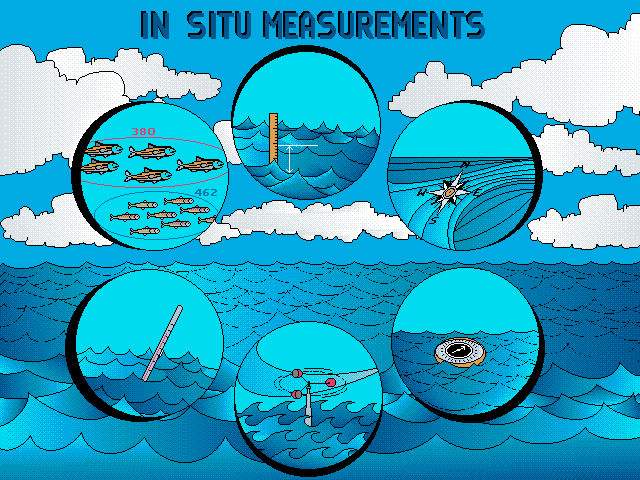
sophisticated moorings with several instruments that can make these measurements
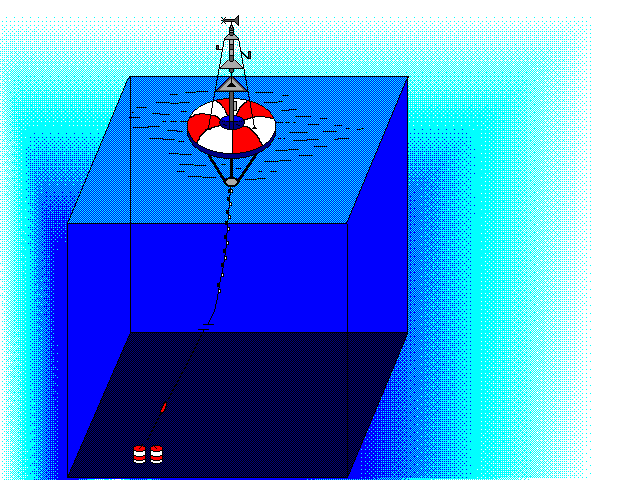
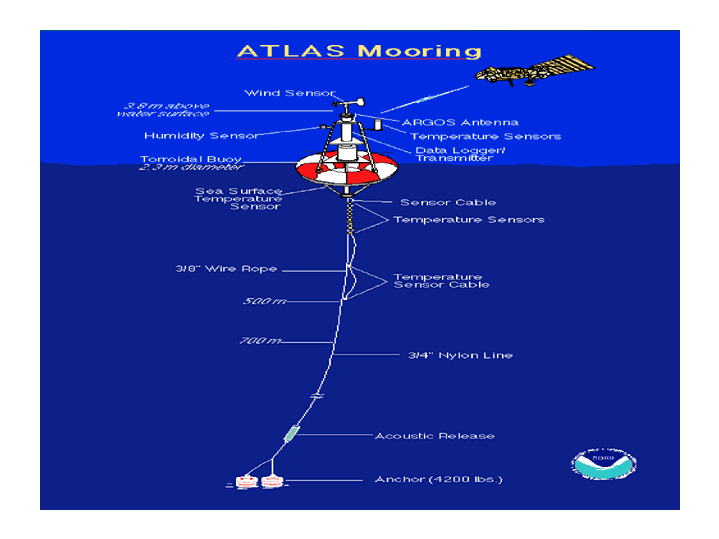
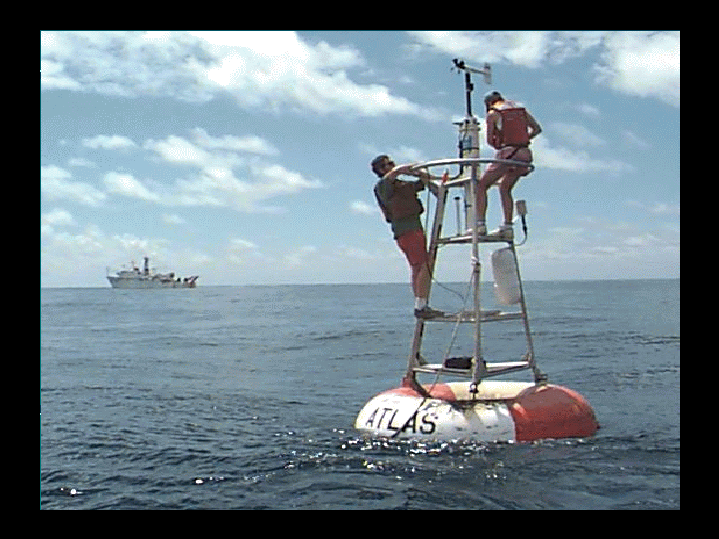
Many of these instruments part of the TAO (Tropical Atmosphere Ocean) Array
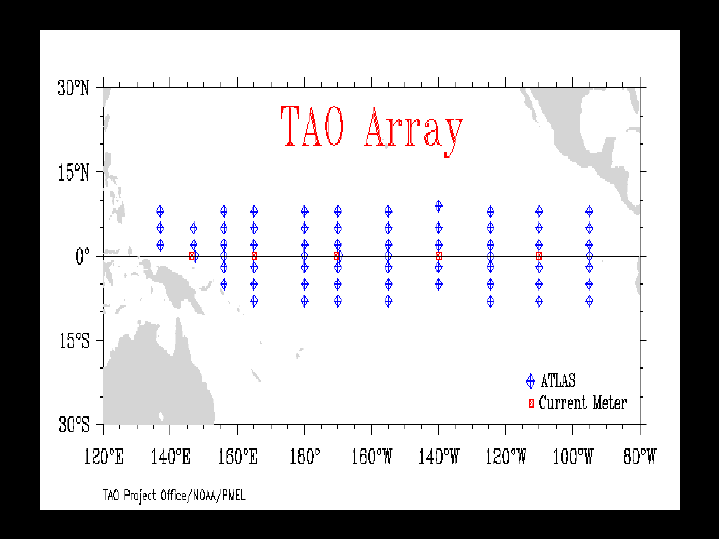
TAO is part of the TOGA (Tropical Ocean Global Atmosphere) COARE (Coupled Ocean-Atmosphere Response Experiment) Program, started in 1985
satellite measurements, particularly of sea surface temperature

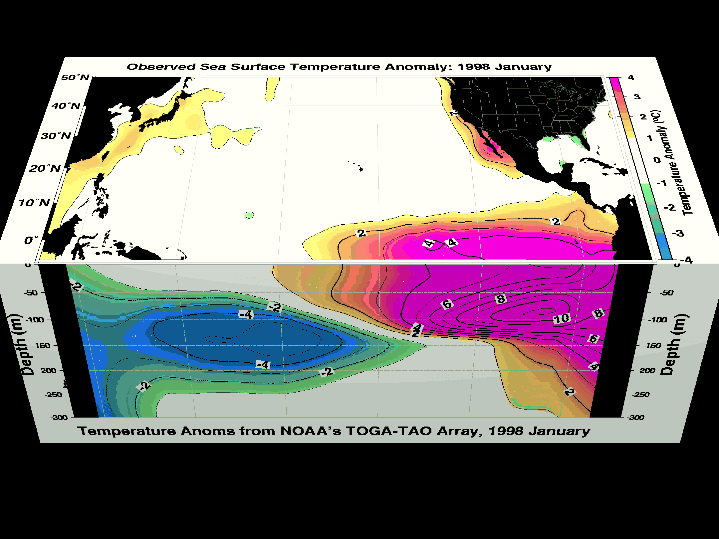
combinations of various kinds of data

that can be put into predictive models
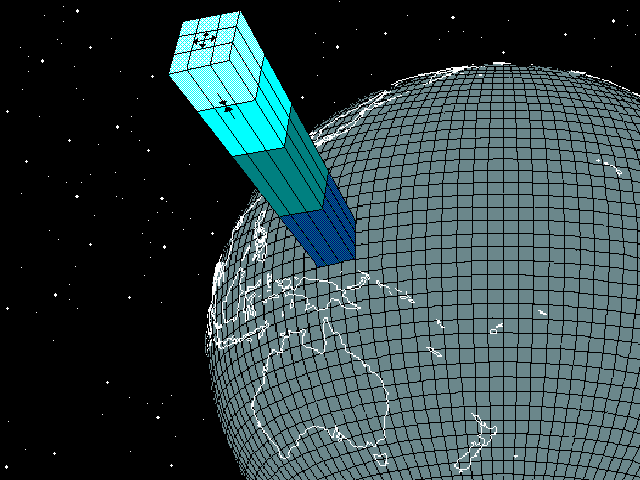
La Niña
Another phenomenon related to El Niño is called
La Niña ("the girl")
- NOT tied to the Southern Oscillation
- tradewinds get stronger
- SST's are lowered in the SE Pacific
- normal conditions are exaggerated
- dry areas get drier (drought)
- wet areas get wetter (floods)
occur in between El Niños - 1955, '63-'64, '66, '70, '75, '88, '98
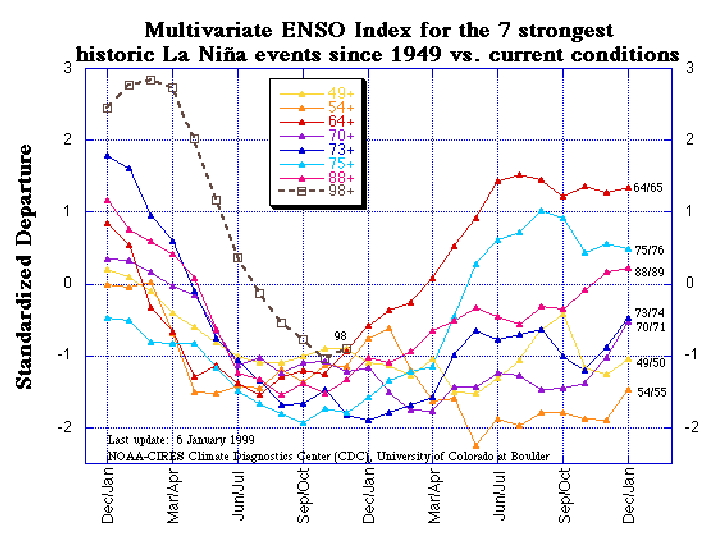
El Niño AND La Niña
Both an ocean/atmosphere phenomena
Both affect wind, rain, and SST patterns
Both appear to occur in cycles
El Niño VERSUS La Niña
| El Niño |
La Niña |
"Southern Oscillation"
| No "oscillation"
|
| Tradewinds fail
| Tradewinds increase
|
| Reverse flow of air
| No reverse flow
|
| Elevated SST
| Decreased SST
|
| Upwelling decreased
| Upwelling increased
|
| Fish die
| Fish thrive (can still be a
bad deal if fish prices drop)
|
| Dry areas flooded
| Dry areas get drier (e.g., Florida)
|
| Wet areas dry up
| Wet areas get flooded (e.g., Oregon)
|
Lessons to be learned from El Niño:
- Earth phenomena are very much interrelated
Ocean <======> Atmosphere
- A significant change in any one component of
the Earth's system may have drastic effects on the rest
of the Earth (Bjerknes' concept of "teleconnections")
- We must understand El Niño in
order to predict its coming and thus be
better prepared to avert disaster
- Invest in soybean futures the year after an El Niño!
Because El Niño years are bad for the fishing industry, there
will be no fish to eat for humans and no fish meal to be used to
feed cattle. Unhappy cattlemen will then turn to soybeans as
an alternative to feed their cattle.
Closing Quote
"We're dealing with the
interplay between two very different fluids -- atmosphere
and ocean -- in the boundless dimensions of time and
space. Neither medium has a 'normal' state, and
abnormality in one causes abnormality in the other.
Weather is always abnormal. Events such as El Niños
have no definite starting point and no end -- it's a
matter of where you break into the scene, and where you
leave it. Perhaps the only thing more complex is human
behavior itself."
-- Dr. Jerome Namias, forecast specialist,
Scripps Institution of Oceanography
[ home port |
lectures |
labs |
surf |
email prof. ]
http://dusk.geo.orst.edu/oceans/elnino.html



 Best way to understand how El Niño occurs is to
look at what happens in the Pacific under normal
circumstances and then we'll see how things are literally
reversed during an El Niño event.
Best way to understand how El Niño occurs is to
look at what happens in the Pacific under normal
circumstances and then we'll see how things are literally
reversed during an El Niño event.



















